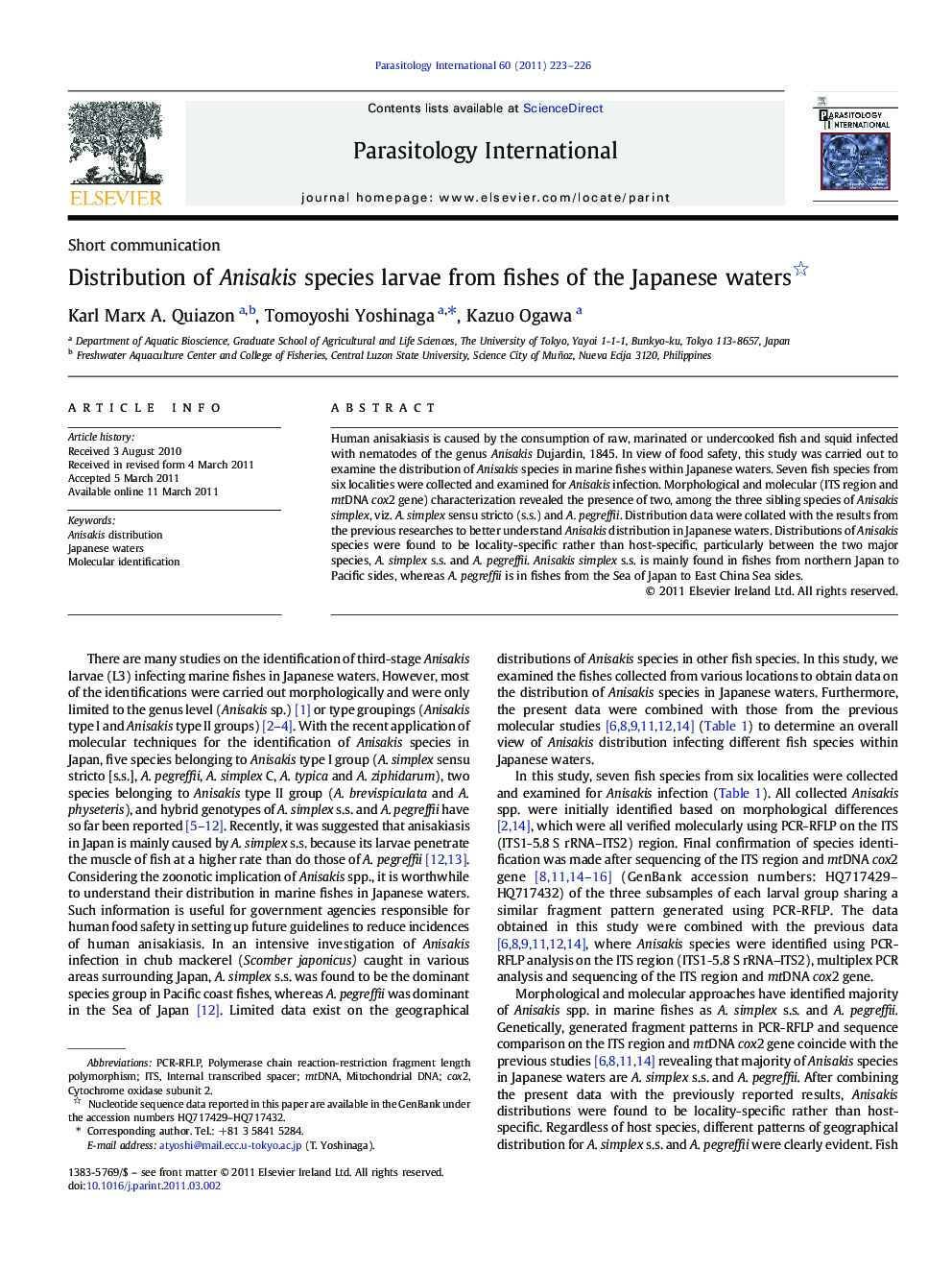| Article ID | Journal | Published Year | Pages | File Type |
|---|---|---|---|---|
| 3418200 | Parasitology International | 2011 | 4 Pages |
Human anisakiasis is caused by the consumption of raw, marinated or undercooked fish and squid infected with nematodes of the genus Anisakis Dujardin, 1845. In view of food safety, this study was carried out to examine the distribution of Anisakis species in marine fishes within Japanese waters. Seven fish species from six localities were collected and examined for Anisakis infection. Morphological and molecular (ITS region and mtDNA cox2 gene) characterization revealed the presence of two, among the three sibling species of Anisakis simplex, viz. A. simplex sensu stricto (s.s.) and A. pegreffii. Distribution data were collated with the results from the previous researches to better understand Anisakis distribution in Japanese waters. Distributions of Anisakis species were found to be locality-specific rather than host-specific, particularly between the two major species, A. simplex s.s. and A. pegreffii. Anisakis simplex s.s. is mainly found in fishes from northern Japan to Pacific sides, whereas A. pegreffii is in fishes from the Sea of Japan to East China Sea sides.
Graphical abstractFigure optionsDownload full-size imageDownload as PowerPoint slideResearch highlights► Distributions of Anisakis simplex sensu stricto and A. pegreffii were locality-specific. ► A. simplex sensu stricto was distributed in the Pacific coast. ► A. pegreffii was distributed in the coast of the Sea of Japan.
